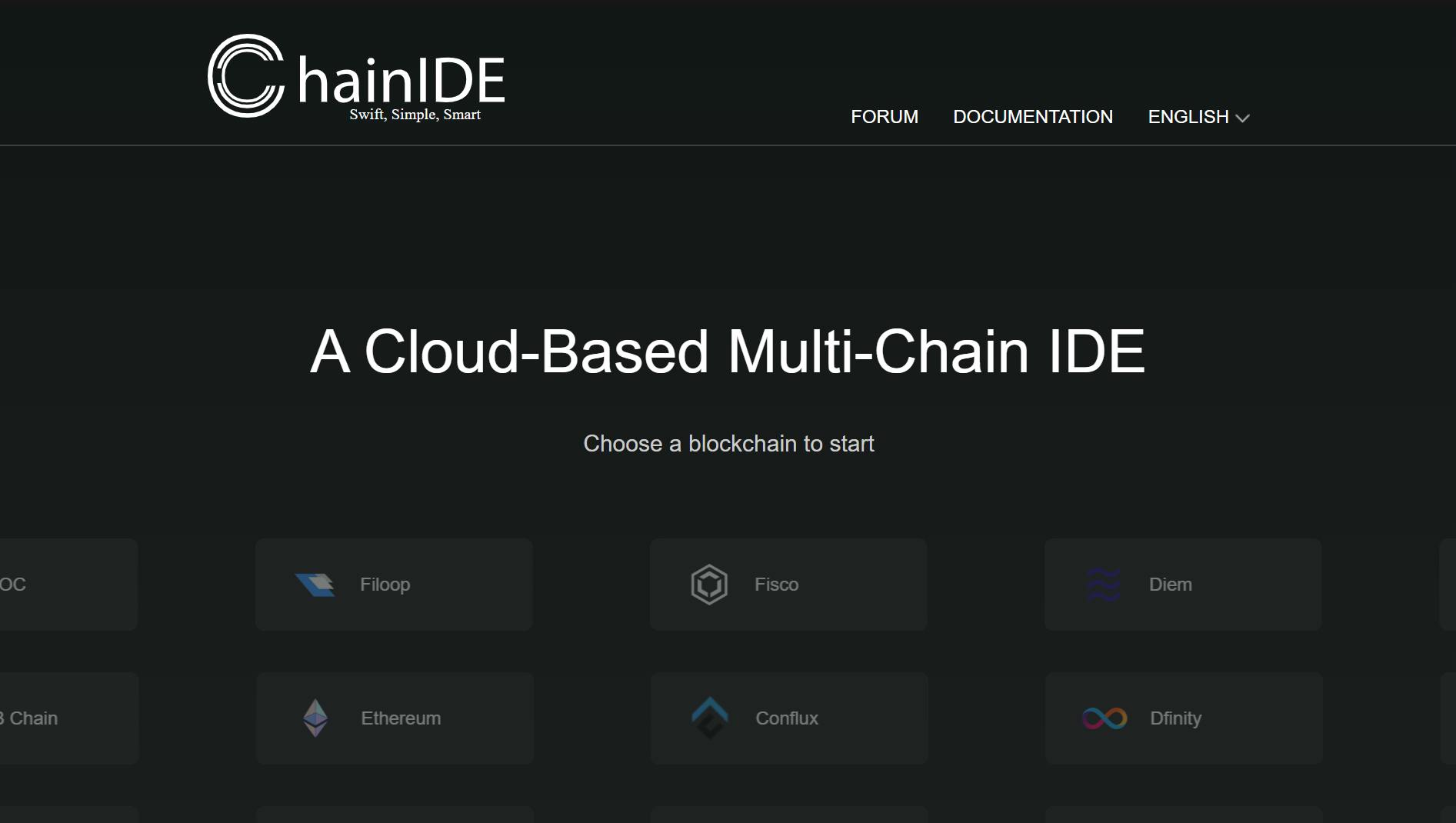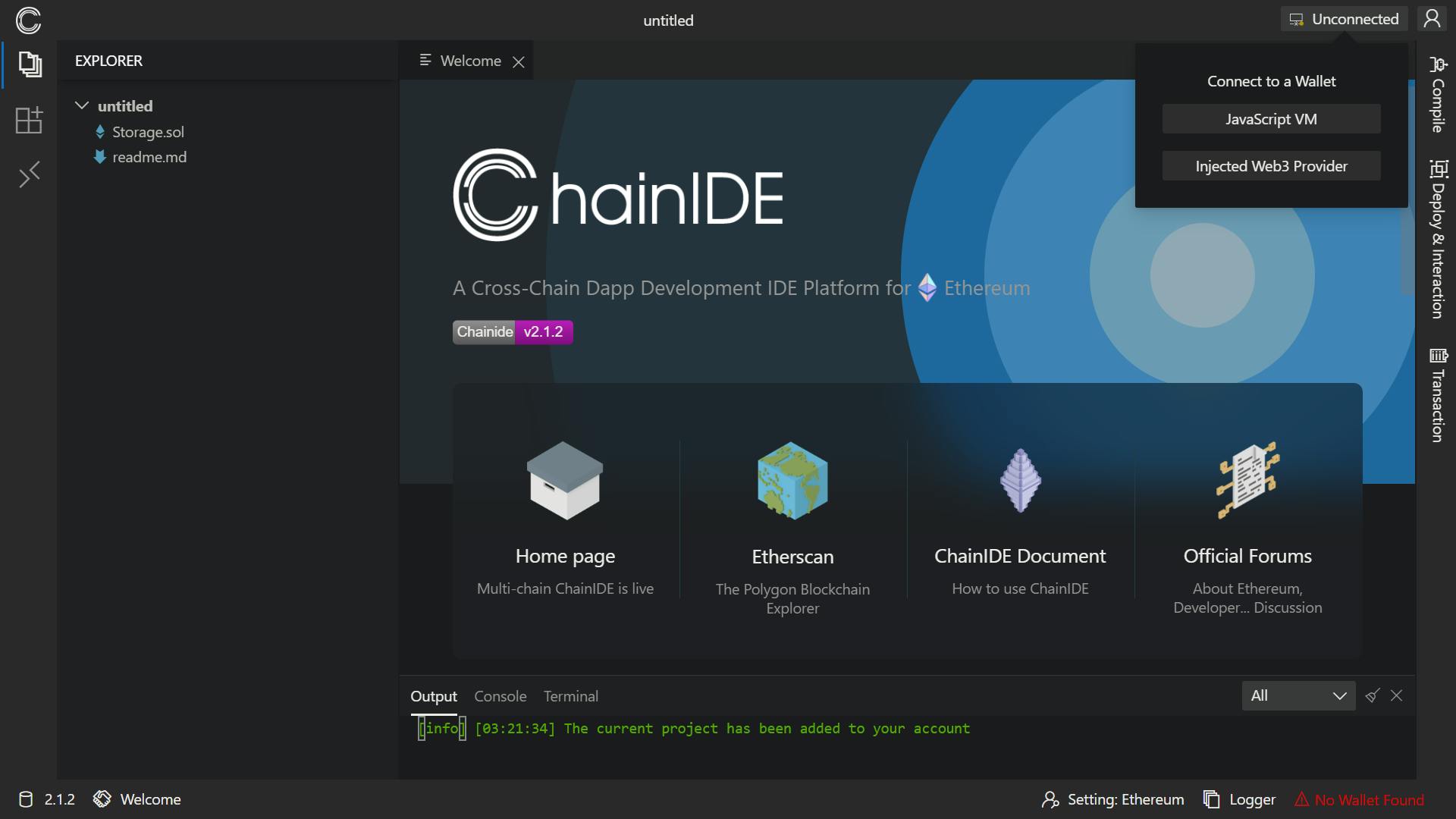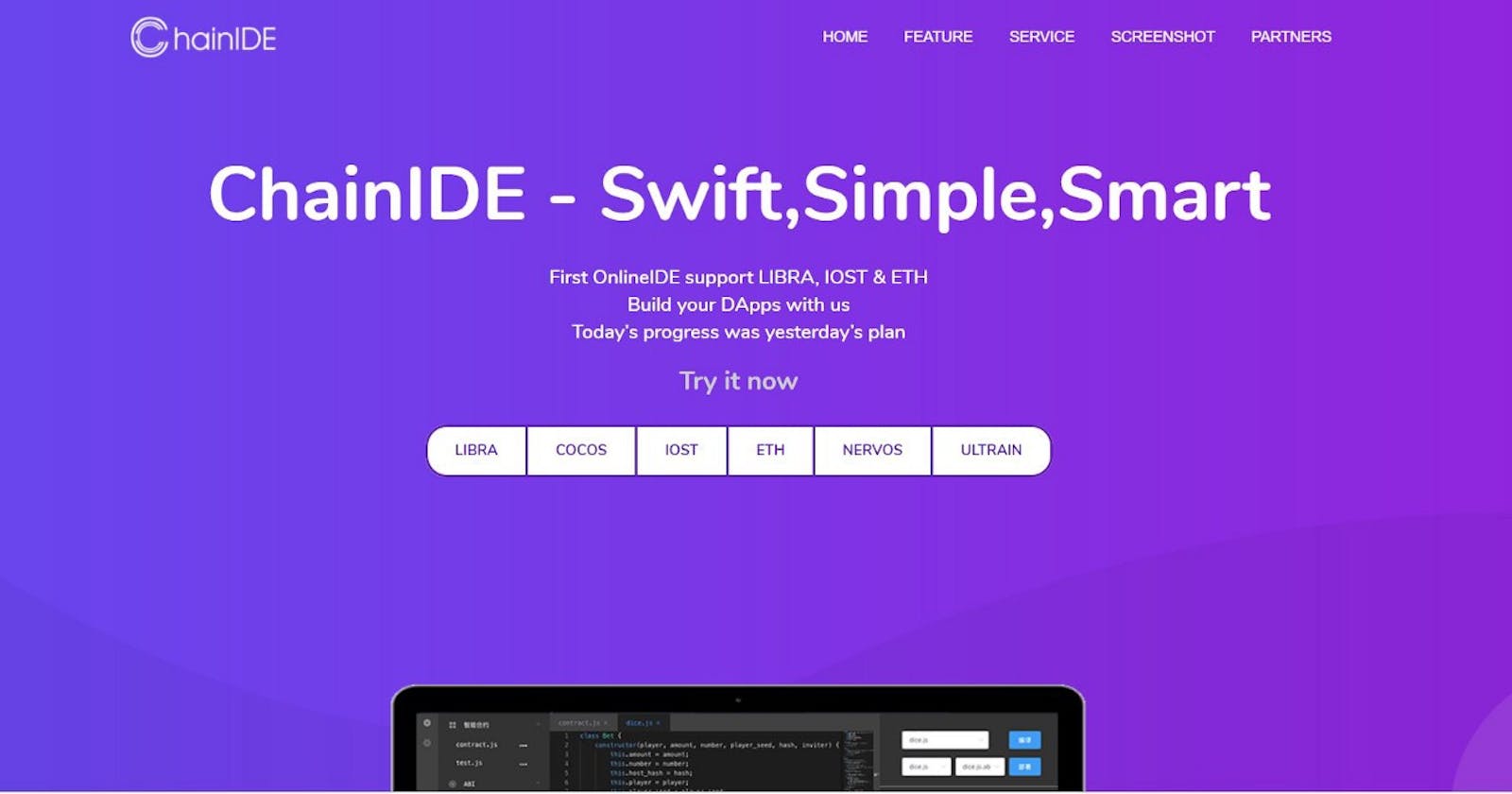Hello guys, how are you all doing? Today, we are going to talk about ChainIDE, the features of ChainIDE, how to start building a decentralized application using ChainIDE, how it is different from other IDEs, and why you should start using ChainIDE.
So, What is ChainIDE ?🧐
ChainIDE is a cloud-based integrated development environment (IDE) for building applications for Ethereum, Polygon, Binance Smart Chain, Nervos, and a host of other chains. It has an interactive, easy-to-use environment and ready-to-use plugins that shorten development time and costs.
Key features of ChainIDE 🗝
- Simple Interfaces
- Multichain support
- Web-based
ChainIDE Features ✏
Cloud-based:- Basically, with ChainIDE you can write a decentralized application in the browser. You don't need any extra environment setup or installing any other dependencies in order to get started using ChainIDE.
Development, debugging, and Deployment in one place:- It means that you don't need any other dependencies or tools to help you finish the entire cycle of the app development.
Multichain support:- This means it supports two types of blockchain. the first type is consortium blockchain, which is also known as Federated blockchain, and the second type is public blockchain such as Ethereum, Polygon, Binance Smart Chain, conflux, etc.
ChainIDE Functionalities 🛠

File system:- ChainIDE has a file system to manage all your files.
Editor:- The central pen is where you can write and debug your code.
File preview:- This is important not only because you want to read the code in a raw text format, but you would also want to preview the HTML file.
Compile, deployment, and interaction:- These are the three key steps of smart contract development. First, you need to compile the smart contract, then deploy it, and then interact with it.
Testnet:- ChainIDE also has a testnet support, and you can also spin up your local testnet using the chainIDE sandbox.
Plugin system:- The ChainIDE's plugin system allows users to add plugins and extensions to the ChainIDE Ecosystem.
Products Comparison ⚖
Some of you guys may have used other products like Remix and Visual studio code. So here, I am going to do a rough comparison between these products.
Firstly, Let's talk about remix. Remix is one of the most popular cloud-based smart contract IDEs, it is simple to use, and also has a one-click deployment and debugging. It also has very rich features for solidity.
Secondly, Visual Studio code editor is a general-purpose IDE. It's the most popular desktop free IDE, and arguably the biggest user base, and it also has a lot of useful plugins and extensions.
So what's the difference between these two produces compared to ChainIDE?
Remix is EVM (Ethereum visual machine) only. It does not support multi-chain blockchain, but that's totally understandable because it's basically kind of backed by the Ethereum foundation. It has no front-end development feature, and it's running purely in the browser, which means that if you want to do a full stack development that relies on NPM node runtime, then you have to use some other development tool to help you finish the entire development process. So that's kind of a throwback of it, and it requires a lot of complicated configuration before starting the actual development.
Visual studio code editor on the other hand is not designed specifically for blockchain and decentralized application development.
And here is where ChainIDE bridged the gap. Basically, ChainIDE delivers easy development to the end-users. Developers can easily use ChainIDE for development regardless of whether they are having a solid development background or not. Both simple and complicated functional applications can be developed through ChainIDE. You can develop a full-stack application using ChainIDE, it supports both NPM node runtime and solidity code runtime. ChainIDE also provides customized features and plugin systems, and the fourth thing is the Ecosystem, ChainIDE gives you more useful services and activities to help more developers to build and incubate their applications.
How to get started using ChainIDE 📌
- Head over to ChainIDE official website at chainIDE .com to get started.

- Then click on the blockchain you would like to work on. For me, I clicked on Ethereum. you will be prompt to sign in with your Github account, and ChainIDE code Editor will be given to you to start building a fully fledge decentralized application after you have signed in.

And Voila here, you can start building your decentralized application.
Supporting Services/Solutions ⚙
ChainIDE also has support services and solutions that are actually joined with ChainIDE to build a full ecosystem. First is the ChainBase.
ChainBase
It manages the hosting solution for the frontend, backend, and media of a decentralized application.
Features of ChainBase
- Frontend hosting
- Backend hosting
- NFT media hosting CDN
Auth and identity
ChainSync
It manages data synchronization and enhancement of services that actually syncs the blockchain event and on-chain data to the off-chain store.
Features of ChainSync
- Syncs blockchain event and onchain data to offchain store.
- Enhances synced data.
- Triggers off-chain function/service call through on-chain event.
Infra-Less in ChainIDE -- SandBox 🎗
ChainIDE skips the configuration of environment setting, infra, and services. So you can directly go to the browser, open the Website and do the program. And if you need to develop a backend, then you don't need to bring your own hardware. You just need to connect to ChainIDE Sandbox. ChainIDE Sandbox has a virtual environment that contains a backend server. If you want to start a ReactJs or NodeJs server, you just create a corresponding sandbox.
Here is what that will make the frontend, backend, and smart contract development in one place
ChainIDE has a node runtime, gas runtime, truffle runtime, and backend node. You can just spin up these different types of nodes without any cost.
That's it for today guys, I hope you guys learned a lot about ChainIDE from this brief tutorial. Thanks, and I hope to see you guys again. 🤗
